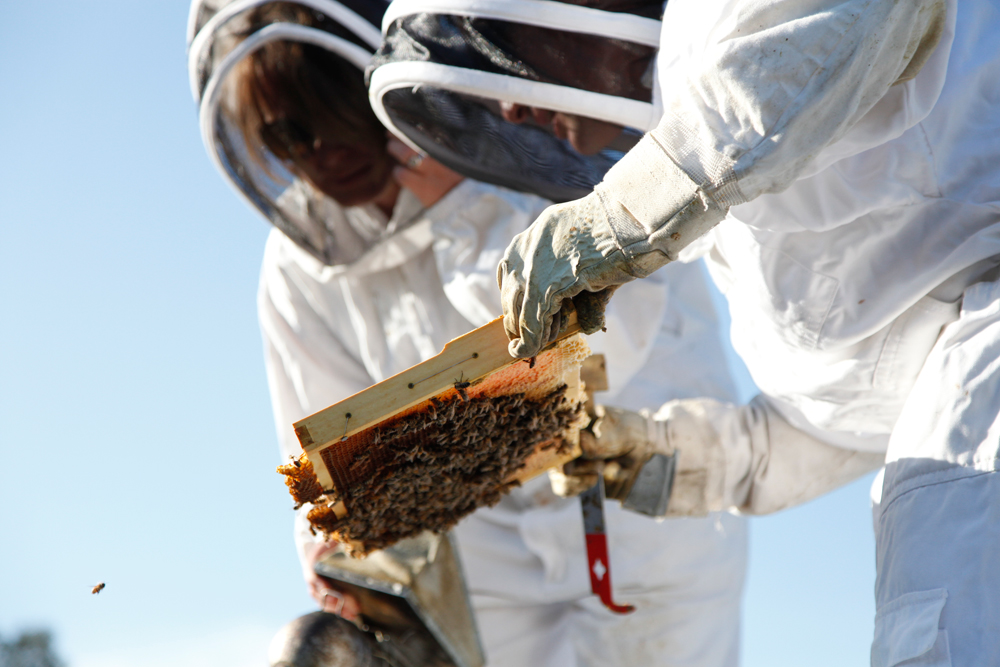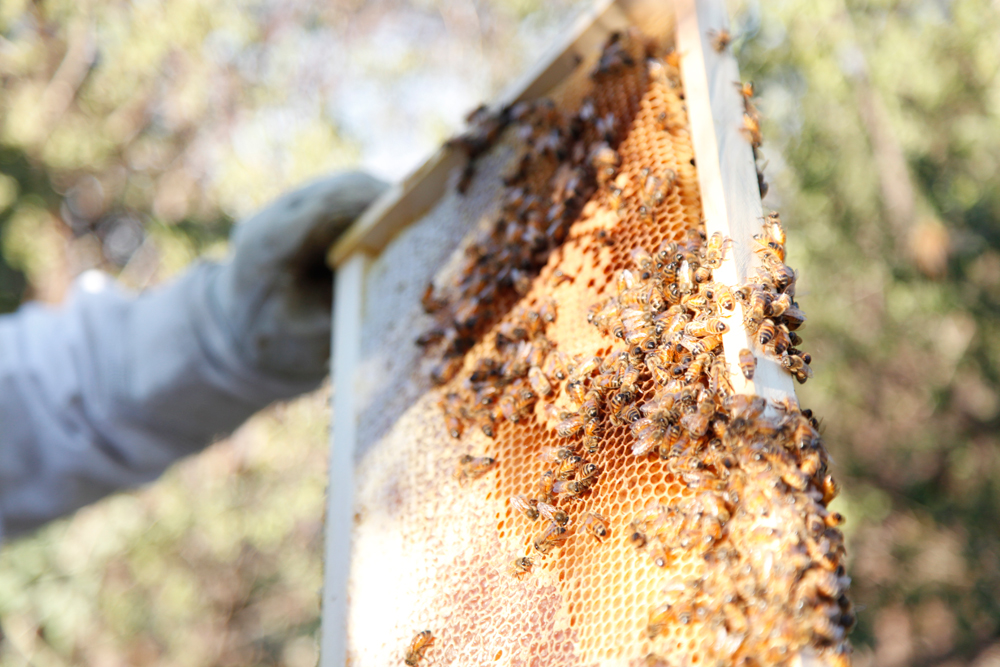The barometry of bees: Melbourne City Rooftop Honey

As you enjoy your daily grub, consider that every third mouthful is brought to you by the hardworking honey bee. Apis Mellifera (the European honey bee) is the world’s best pollinator (in part, because she is so wonderfully hairy) and directly contributes to around 65% of our food production nationally, worth over 2 billion dollars annually to Australian agriculture. Without her, you’d have to wave goodbye to apples, almonds, pumpkins and other commercially-produced foods that are 100% dependent on honey bee pollination. For everyone (except my little nephew who ‘doesn’t do’ fruit or veggies as a rule), going bee-less is a terrifying concept. Yet, with the triple threat of Varroa mite, colony collapse disorder and the by-products of modern industrial agriculture (pesticides, ‘monocultural’ planting and genetically-modified crops), we are much too close for comfort to a world without honey bees. A world without bees would lead to significant food shortages, which could spell the end for us homo sapiens.
Vanessa Kwiatkowski and Mat Lumalasi are the founders of Melbourne City Rooftop Honey, an urban beekeeping project. At first, Vanessa and Mat kept bees as a hobby. Mat recalls that it was almost chickens, but “then we brought bees into the equation. We thought they’d be a little neater and quieter. So we did a course and got a bee hive and just fell in love with bees…it becomes really quite mesmerising and meditative.” A few bee facts: worker bees are all female – ladies bring home the bacon (in this case, the pollen) and build, clean and maintain the hives; male bees are called drones – to put it bluntly, they live to service a queen – once the deed is done, they die; at peak season, queen bees can lay around 2000-2500 eggs per day.
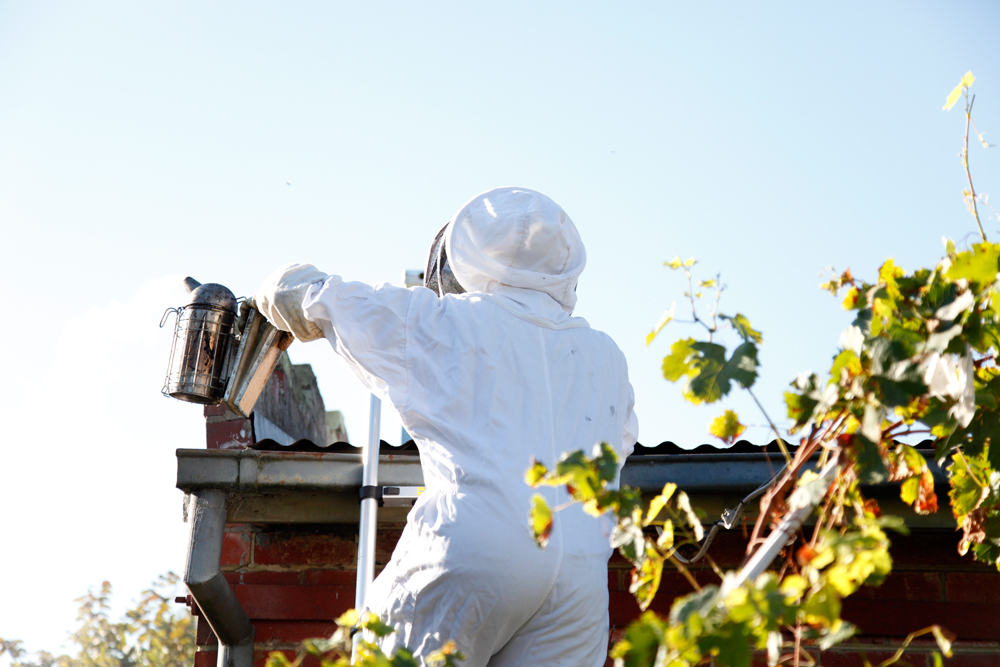
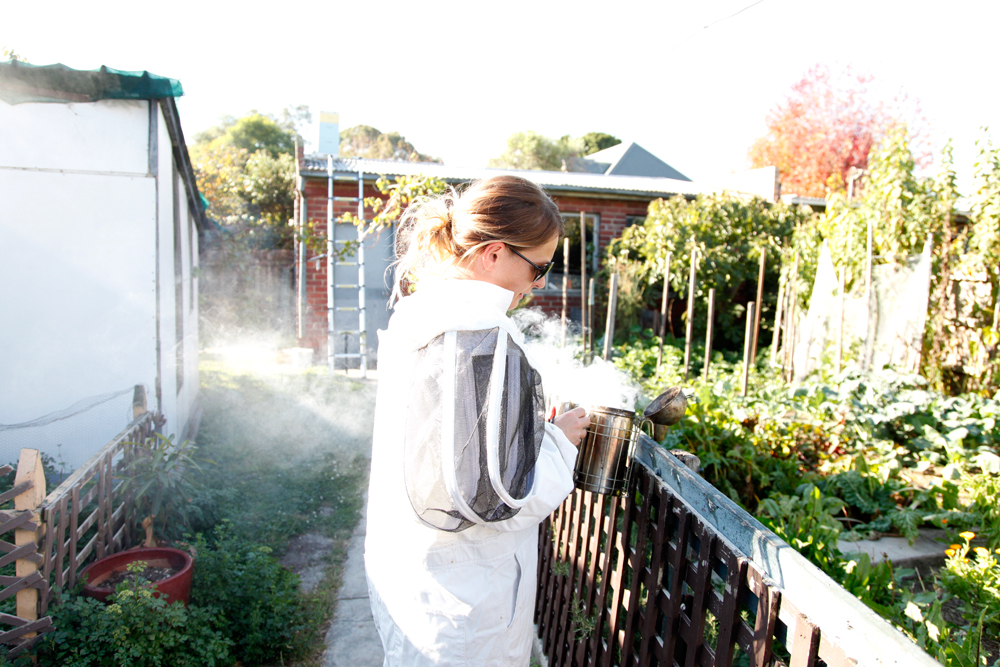
Vanessa and Mat have cared for millions upon millions of bees. Currently ‘parenting’ around 50 hives across Melbourne, and with a bee count of around 60,000 per hive, there’s “a lot of kids to look after”, says Mat. Vanessa agrees that bees “are like pets. You can’t just leave them, you have to actually manage them, work them. Studies have shown that they recognize faces. They’re driven on pheromones, so they can smell you. They can see you — it’s a different kind of vision than what we have, but it all helps with familiarity. There’s an old beekeeping thing that says if you don’t talk to your bees, it’s bad luck”. Each hive has its own distinctive ‘personality’. On the afternoon I spent following Mat and Vanessa, we visited two hives in Northcote. One, at the Northcote Community Gardens, was home to a blonde, “chilled out” colony (“we call them the Swedish bees”, said Vanessa); the other, at the kitchen garden of the Aylesbury chef Jesse Gerner, had a more feisty temperament – hive maintenance had to be speedier so as not to risk a quick sting.
Vanessa and Mat care for their bees using natural methods, eschewing commercial practices for a free-range and localised approach. As Mat explains, “we need to look after our bees and realise how important they are, rather than viewing them as just a tool for making honey. We need to show them the respect they deserve and start to change the way in which we look after them.” Unlike most commercial operations, Vanessa and Mat do not feed their bees sugar syrup as a general rule, making sure not to ‘over-rob’ honey stores, ensuring their bees are self-sufficient throughout winter and all seasons. As Vanessa explains, “imagine you’ve collected all this nectar and pollen and stuff and then you get robbed and you’re stuck all winter drinking sugar syrup”. Both agree that too much sugar syrup is “like fast food for bees. Like having McDonald’s all winter.”
Raising bees is not all milk and honey – there’s a sobering importance to the work of Melbourne City Rooftop Honey. As Mat surmises, “without bees, humans would cease to exist after some time”. Australia remains the last country in the world with ‘clean bees’ – bees not yet infected by the deadly Varroa Destructor mite (a vampiric parasite that lives on infected honey bees and reproduces in bee larvae within bee colonies). Dr. Denis Anderson is a CSIRO entomologist and world bee specialist who first identified the Varroa Destructor mite. Only highly toxic chemicals can treat Varroa infestation, but because of its tenacity, Varroa is now immune to a growing list of chemical treatments. As an island, Australia has been somewhat protected from the spread of Varroa. However, being girt by sea has not saved New Zealand from Varroa, which spread to its shores last decade, continuing to decimate its honey bee colonies. More recently, Varroa Jacobsoni (a different strain to Destructor that lives benignly on Asian bees) was identified by Dr. Anderson in Papua New Guinea in 2008. Like Varroa Destructor, Varroa Jacobsoni has also mutated and adapted to ‘jump species’ from the Asian to the European honey bee. Dr. Anderson believes it’s only a matter of time before Varroa hits out shores, despite our strict quarantine laws. As Vanessa notes, “Australia is a huge mass – it’s hard to control every single point of entry into the country. Realistically, if we get Varroa mite it will come via a shipping container of some sort”. The recent Asian bee incursion in Cairns began with a rogue hive in the mast of a ship.
Through the Rooftop Honey project, the duo hope to place beehives on rooftops or gardens throughout the city and every suburb of Melbourne, raising awareness in the wider community about food security, food miles and provenance as well as the protection of biodiversity in the environment. According to Mat and Vanessa, healthy, well-managed hives will give us the best chance to combat and repopulate depleted honey bees, should Varroa hit our shores.
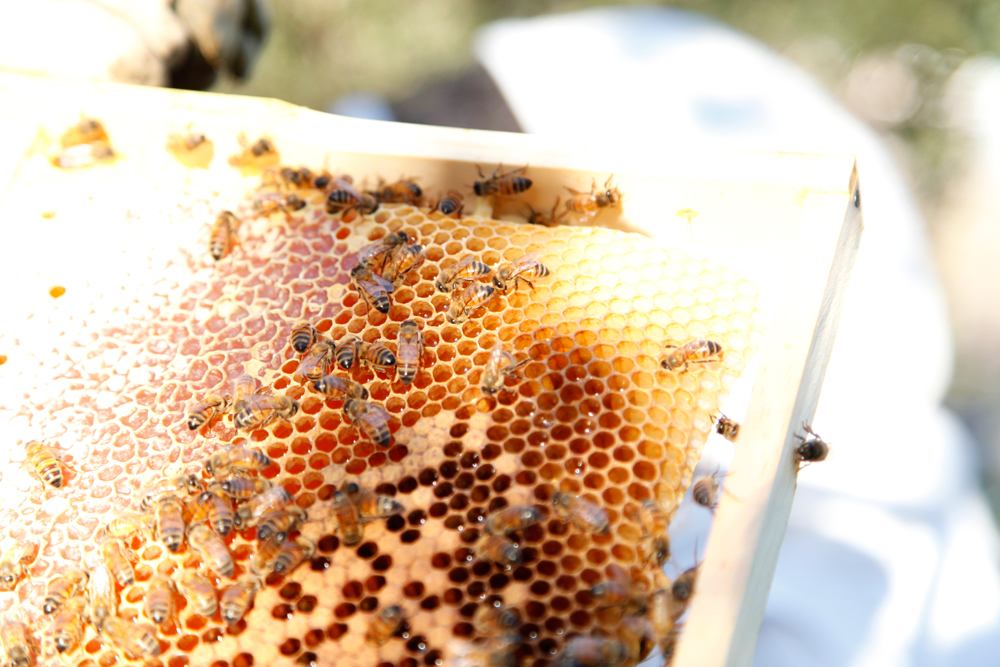

Once Vanessa and Mat site a hive in its new home (through their Sponsor a Hive or Adopt a Hive initiative), it stays put. Instead of blending honeys, “each hive stays separate”, says Vanessa, “which involves a little bit more work, but I think in the long run, it’s better – people get to be able to have their own local honey and each site gets excited at the fact that their honey is different from, you know, another suburb away.” It turns out that Heidelberg is quite “minty”, with lots of eucalypts and red gums while Alphington is big on yellow box. In the city itself, there is a “strong heaviness” to the honey, while South Melbourne, in contrast, tastes light, grassy and “really green”. St Kilda is “sweet”, Prahran is “citrusy” and Ascot Vale tastes like Turkish delight. Urban bees have a richer and more biodiverse diet than their country counterparts (who, due to industrial agriculture, are more likely to have a monocultural diet) and this is reflected in the wide palette of flavours in Vanessa and Mat’s various honeys.
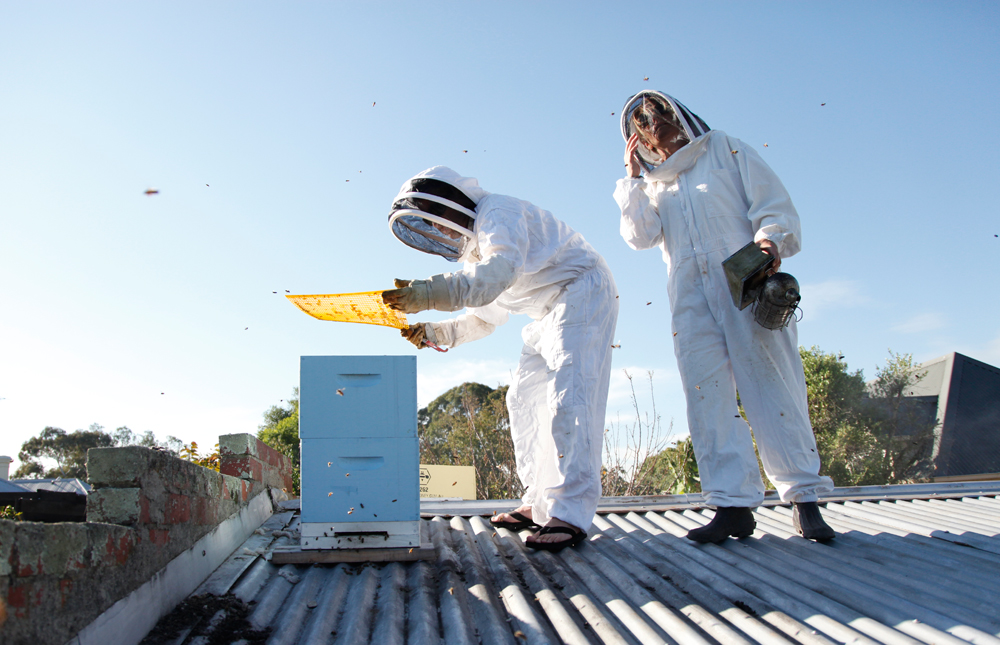
Urban beekeeping culture is thriving in cities like New York, Paris and throughout the UK and Mat and Vanessa are keen to travel to ‘talk bees’. “We always want to be proactive”, says Vanessa, “rather than make up for something later on”, agrees Mat. While travel may be awhile off yet – the project is still run on love rather than money – Vanessa and Mat will continue to focus on awareness and education. “Half of our hives didn’t make any honey this year and that’s fine – it’s not about that, it’s about maintaining healthy bees. Having honey is a by-product of healthy bees”. Since they first developed an interest in bees, they have found an ally and mentor in (a fantastically-named) apiarist, Helmut Huber, “an Austrian fellow”. Not a week goes by without a meeting with Helmut and the pair consider him to be their own personal font of bee knowledge. I tell them his role with the Victorian Bee Keepers Club – “Swarm Coordinator” – is the best job title I’ve ever heard. Beekeepers have a reputation for being an eccentric bunch and the duo want to keep building their knowledge from those around them. “There’s a lot of wisdom in bee keepers, and there’s an old saying – if you ask three bee keepers the same question, you’ll get four answers, and all of them are right.”
For more information on honey bees in Australia, Dr. Denis Anderson and Varroa, watch Honey Bee Blues. You can also find more bee resources and links on Melbourne City Rooftop Honey, here. To taste some for yourself, visit these stockists or email Mat and Vanessa via info [at] rooftophoney.com.au for more info.
All photos by Eugenia Lim.

